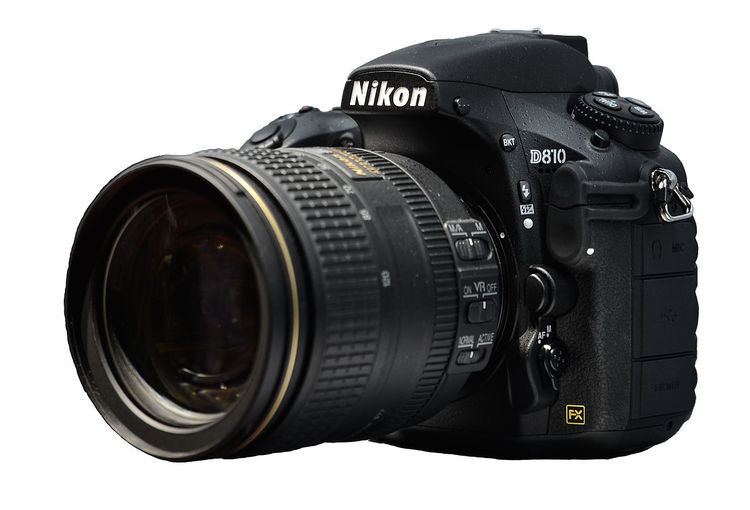 | ||
Sensor 35.9×24 mm Full Frame FX format CMOS, 4.88 µm pixel size ASA/ISO range 64–12800, extended mode 32 to 51,200 Storage CompactFlash (Type I, UDMA compliant) and Secure Digital (UHS-I compliant; SDHC, SDXC compatible and with Eye-Fi WLAN support) | ||
The Nikon D810 is a 36.3-megapixel professional-grade full-frame digital single-lens reflex camera produced by Nikon. The camera was officially announced in June 2014, and became available in July 2014.
Contents
Compared to the former D800/D800E it offers an image sensor with a base sensitivity of ISO 64 and extended range of ISO 32 to 51,200, an Expeed processor with noise reduction with claimed 1 stop noise improvement, doubled buffer size, increased frame rate and extended battery life, improved autofocus - now similar to the D4S, improved video with 1080p 60 fps and many software improvements.
Features
Accessories
Reception
At the time of its release, the Nikon D810 became the Dxomark image sensor leader ahead of the Nikon D800E and received many reviews.
Service advisory
On August 19, 2014, Nikon acknowledged a problem reported by some users, of bright spots appearing in long-exposure photographs as well as "in some images captured at an Image area setting of 1.2× (30×20)." Existing owners of D810 cameras were asked to visit a website to determine whether their camera could be affected, on the basis of serial numbers. Repairs would be made by Nikon free of charge. If bright spots still appear in images after servicing, Nikon recommends enabling Long exposure NR. Products already serviced have a black dot inside the tripod socket.
Nikon D810A
An astrophotography variant with a special infrared filter capable of deep red / near infrared and with special software tweaks like long-exposure modes up to 15 minutes, virtual horizon indicator and a special Astro Noise Reduction software was announced February 10, 2015. The D810A's IR filter is optimized for H-alpha (Hα) red tones, resulting in four times greater sensitivity to the 656 nm wavelength than the D810. In comparison, Canon's astrophotography DSLR's 20Da and 60Da Hα sensitivity was 2.5 times and 3 times (respectively) more than the standard 20D / 60D. The D810A additionally has 1.39 stops advantage due to the larger image sensor format – resulting in better than 2 stops sensitivity advantage giving over four times faster exposure times compared to the Canon 20Da/60Da.
Although the D810A can be used for normal photography, due to the deep red / near infrared sensitivity the in-camera white balance may fail in case of fluorescent light or difficult cases with very strong infrared light – requiring an external infrared filter. Nikon published an D810A astrophotography guide which recommends live view focussing with 23× enlarged selected areas and a gallery showing the mostly small effects to the color reproduction in "normal" photos.
A review concludes that especially the D810A long exposure noise is superior compared to the D800E and other Nikon fullframes, and shows effects of the increased H-alpha sensitivity. Color balance of "normal" photos seems mostly correct, except comparatively hotter objects with strong infrared radiation and a bit more purple in sunsets.
